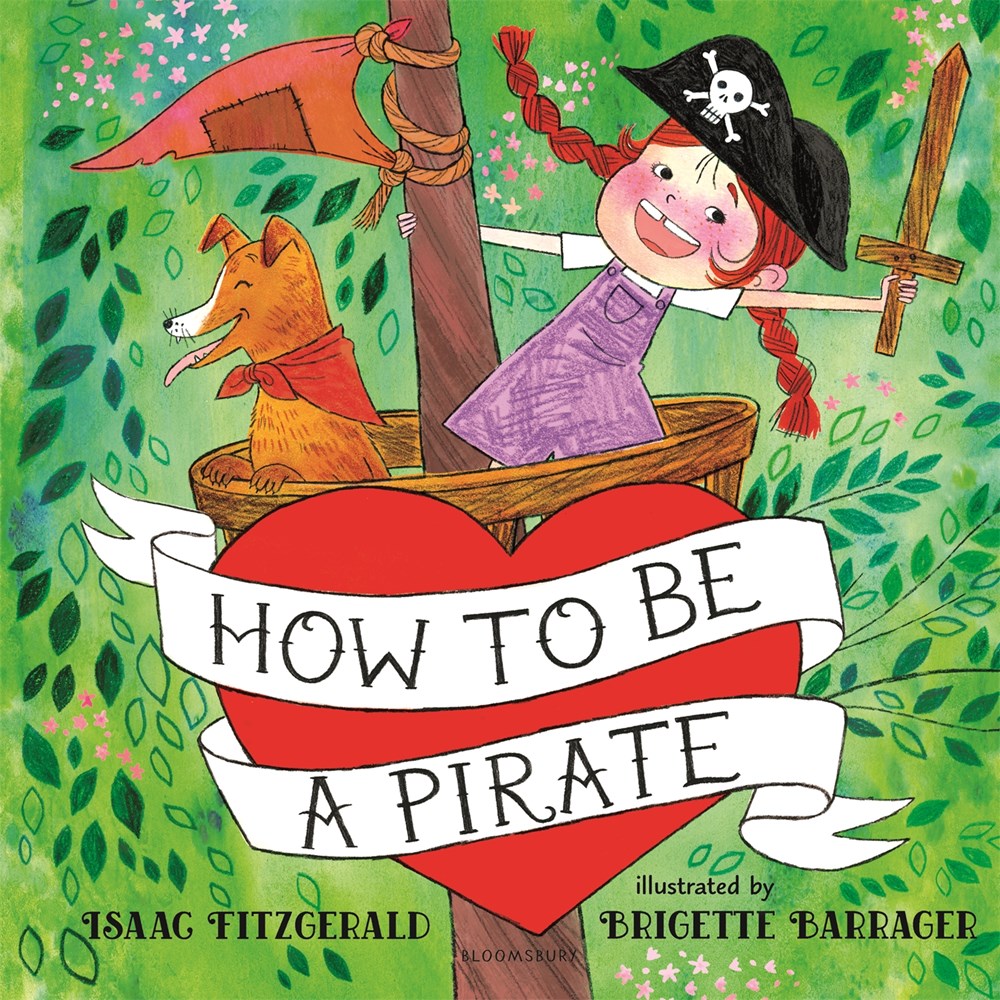Tips for Teachers is a monthly column in which experienced teacher and children’s librarian Emmie Stuart shares book recommendations and a corresponding teaching guide for fellow elementary school teachers.
During Father’s Day lunch, my parents asked about the subject of my July column, and as soon as the words 50th anniversary of the moon landing left my mouth, I was subject to listening to their vivid recollections of the historic event. As 9-year-olds during the “Summer of ’69,” they were two of the millions of children who were gathered around their TV set on that hot summer July evening, eagerly watching and waiting. President Nixon’s words reflected the emotions of the entire country as the space race was finally won: “Hello Neil and Buzz. I’m talking to you by telephone from the Oval Room at the White House, and this certainly has to be the most historic telephone call ever made. I just can’t tell you how proud we all are of what you have done. For every American, this has to be the proudest day of their lives.”
Launch the new school year with the following four books, which expertly convey the importance of Apollo 11’s momentous landing.
 Papa Put a Man on the Moon by Kristy Dempsey, illustrated by Sarah Green
Papa Put a Man on the Moon by Kristy Dempsey, illustrated by Sarah Green
Reflecting back on her own family history, Dempsey addresses a new aspect of the moon landing. Though her entire South Carolina community is anticipating the moon landing, 11-year-old Marthanne is especially excited because her dad works in a textile factory that made one of the 14 layers of the astronauts’ spacesuits. Concluding with the family gathered around the TV to watch Walter Cronkite, the heartfelt story shows students that even seemingly simple jobs are of the utmost importance and that every American has the power to affect history.
- Investigate Space Suits
Ask students why astronauts need to wear special suits. What factors must be considered in their outfits? For older students, read the NASA article “Celebrating 50 Years of Spacesuits, Featuring the Early Pressure Suits.” Explaining several aspects that must be considered when designing suits, it is an excellent and complex STEM article requiring students to read and think critically. The video “How Astronauts Put on Space Suits” shows the long and complex process of getting “suited up.” If you have access to a projector, walk through NASA’s interactive Clickable Spacesuit with younger students.
- Suit Up!
Watch NASA’s “How Do You Suit Up?” video. Starting with an astronaut’s suit, the video ends by encouraging viewers to consider other ways that Americans “suit up” for their jobs. Invite each child to choose a career or profession that interests him/her. Provide books or online resources, and let them research what suiting up looks like for their chosen career. Provide blank human body templates, and give students time to use markers and colored pencils to draw and label “suit up” diagrams.
 Go for the Moon: A Rocket, A Boy, and the First Moon Landing by Chris Gall
Go for the Moon: A Rocket, A Boy, and the First Moon Landing by Chris Gall
The weeks, days and hours leading up to the moon landing were full of anticipation for the entire country, but perhaps even more so through the eyes of a child. Author-illustrator Gall takes the first-person perspective of a young boy in his new book: “The Astronauts are ready for the mission, and so am I.” The boy’s preparations parallel those of the astronauts as he investigates the science and math behind rocketry and space travel. The articulate STEM concepts and boy’s palpable moon landing excitement combine to make an informative and sincere account of the historic event.
Plan to read this book over two or three read-aloud sessions, as there is much information on each page. And don’t miss the concluding “Fun Facts” page.
- Physics Activity
To help him understand how the Eagle lands on the surface of the moon (“To get there they have to steer the Eagle exactly with just the right amount of thrust to slow down the Eagle so they don’t crash”), the young boy creates his own landing experiment with a handmade lunar landing module and long piece of string. Using packing foam, string, toothpicks and glue, give students time students create their own landing modules. Attach a small hole-punched piece of paper to the top of each. Tie one end of the string to the bottom of a table or chair leg. Students will hold the other end of the string at an angle and send their lunar landing module down the string. The trick is figuring out how much force to apply. Push too hard, and the module will crash, and not enough force will cause it to “run out of fuel” before landing.
- Time Travel Back to July 1969
Give students the opportunity to feel the boy’s excitement during the months, weeks and days leading up to July 20, 1969. Remind them that live TV, radio broadcasts and newspapers were the only ways that people watched and received news. First, watch this news clip describing how the 1969 Mission Control center has been exactly restored to how it looked. If possible, put your laptop on a low desk, and invite students to gather around and sit on the floor. Watch actual footage of Walter Cronkite’s 1969 newscast. Provide a trendy and authentic 1969 snack of Tang and Easy Cheese on Ritz Crackers.
 Daring Dozen: The Twelve Who Walked on the Moon by Suzanne Slade, illustrated by Alan Marks
Daring Dozen: The Twelve Who Walked on the Moon by Suzanne Slade, illustrated by Alan Marks
The Apollo 11 landing on July 20, 1969, launched three and half years of Apollo moon missions. Using spare text, Slade chronologically explains the astronauts, goals and highlights of the next 11 Apollo missions. Marks’ watercolor illustrations capture the vastness of space as well as the intricacies of the spacecrafts and wonder of the astronauts. Thirteen pages of informative back matter (photographs, a timeline and an essay by Alan Bean) explain each mission in greater depth. With well-paced text, cinematic illustrations and extensive supplemental information, it’s sure to both spark and answer classroom questions.
- Apollo Timeline
There is nothing better than a long student-created classroom timeline. Hang a blank 12’-15’ piece of butcher paper along a wall in your classroom or hallway. On the far-left side of the timeline, create a 1958 mark, and on the far-right, create a 1972 mark. Divide students into pairs, and tell them that they are going to become the class experts on one of the Apollo missions. Take three or four days to read about the 12 Apollo missions (don’t forget the back matter for each mission). Then assign each pair a mission, and give them time to perform further research. Each pair is responsible for providing a photograph of the mission astronauts and vehicle as well as neat index cards with the basic facts of the mission. Encourage them to be creative and find neat trivia to share with the class. The photographs, index cards and artwork will be hung on the “Journeys to the Moon” class timeline by the students. Invite the school to come read the timeline and learn about the Daring Dozen!
- Creative Writing
Slade includes information about each mission as well tidbits that reveal the astronaut’s personalities and scientific interests. Alan Shephard plays golf on the moon, Charlie Duke leaves a picture of his family, and Alan Bean collected soil. Invite children to imagine their voyage to the moon. What would they study? What would they want to do? What would they leave or bring home? Give them time to take these thoughts and organize them into a journal entry or first-person POV narrative. Display students’ stories and accompanying illustrations.
 The First Men Who Went to the Moon by Rhonda Gowler Greene, illustrated by Scott Brundage
The First Men Who Went to the Moon by Rhonda Gowler Greene, illustrated by Scott Brundage
In the tradition of “This Is the House That Jack Built,” Greene celebrates the story of the moon landing in a way that is accessible for all ages. The rhythmic verse (“This is the spacecraft, Apollo 11, that lifted off and soared through the heavens and carried the first men who went to the Moon”) is supplemented by informational facts as well as a double spread of photographs at the end. Brundage’s illustrations do much to capture the quietness and desolation of the moon. From liftoff to the celebratory parade, it is a strong and effective introductory moon landing read-aloud.
- Moon Craters
It was vitally important that the Eagle not land in a moon crater. Discuss the science behind craters, and then give students a thrill by letting them create their own craters. Divide students into pairs, and give each pair a disposable round aluminum baking pan, 4 cups of flour, ½ cup of baby oil and a mixing bowl. If preferred, make this mixture beforehand and distribute it to students. Students will spread the dough into the round pan, making the surface as smooth as possible. Then, using collected round objects (marbles, bouncy balls, pebbles, etc.), students will experiment by dropping these items from various heights. How does the size, weight and drop height affect the crater depth and width?
- Google Moon
Download Google Earth Pro and select “Moon” from the dropdown menu. There are several Apollo 11 guided tours and 360-degree photo spheres. With your students, search for moon landmarks such the Sea of Tranquility or Apollo Basin.
- Further Up!
Expand the unit by reading more books celebrating the historic moon landing. My favorites include Counting on Katherine: How Katherine Johnson Saved Apollo 13 by Helaine Becker and Tiemdow Phumiruk, Moonshot by Brian Floca, Team Moon: How 400,000 People Landed Apollo 11 on the Moon by Catherine Thimmesh and One Giant Leap by Robert Burleigh and Mike Wimmer.

 Manhattan: Mapping the Story of an Island by Jennifer Thermes
Manhattan: Mapping the Story of an Island by Jennifer Thermes I Can Write the World written by Joshunda Sanders, illustrated by Charly Palmer
I Can Write the World written by Joshunda Sanders, illustrated by Charly Palmer  Nelly Takes New York written by Allison Pataki and Marya Myers, illustrated by Kristi Valiant
Nelly Takes New York written by Allison Pataki and Marya Myers, illustrated by Kristi Valiant
 ¡Vamos! Let’s Go to the Market by Raul the Third
¡Vamos! Let’s Go to the Market by Raul the Third My Papi Has a Motorcycle written by Isabel Quintero, illustrated by Zeke Peña
My Papi Has a Motorcycle written by Isabel Quintero, illustrated by Zeke Peña  One is a Piñata: A Book of Numbers written by Roseanne Greenfield Thong, illustrated by John Parra
One is a Piñata: A Book of Numbers written by Roseanne Greenfield Thong, illustrated by John Parra  Hummingbird written by Nicola Davies, illustrated by Jane Ray
Hummingbird written by Nicola Davies, illustrated by Jane Ray  Lawrence in the Fall by Matthew Farrell, illustrated by Doug Saleti
Lawrence in the Fall by Matthew Farrell, illustrated by Doug Saleti The Hike by Alison Farrell
The Hike by Alison Farrell Treasure written by Mireille Messier, illustrated by Irene Luxbacher
Treasure written by Mireille Messier, illustrated by Irene Luxbacher  Tiny, Perfect Things written by M.H. Clark, illustrated by Madeline Kloepper
Tiny, Perfect Things written by M.H. Clark, illustrated by Madeline Kloepper 
 Sunny Day: A Celebration of the “Sesame Street” Theme Song written by Joe Raposo
Sunny Day: A Celebration of the “Sesame Street” Theme Song written by Joe Raposo Daniel’s Good Day written and illustrated by Micha Archer
Daniel’s Good Day written and illustrated by Micha Archer Saturday
Saturday
 In late October, I pull out my “It’s the most wonderful time of the year!” wooden sign and prop it up next to my teaching area. My students know that even though the holidays are right around the corner, my most wonderful time of the year is the lead-up to the American Library Association’s
In late October, I pull out my “It’s the most wonderful time of the year!” wooden sign and prop it up next to my teaching area. My students know that even though the holidays are right around the corner, my most wonderful time of the year is the lead-up to the American Library Association’s 









 Caldecott Questions
Caldecott Questions
 It Began With a Page: How Gyo Fujikawa Drew the Way written by Kyo Maclear, illustrated by Julie Morstad
It Began With a Page: How Gyo Fujikawa Drew the Way written by Kyo Maclear, illustrated by Julie Morstad Paper Son: The Inspiring Story of Tyrus Wong, Immigrant and Artist written by Julie Leung, illustrated by Chris Sasaki
Paper Son: The Inspiring Story of Tyrus Wong, Immigrant and Artist written by Julie Leung, illustrated by Chris Sasaki Hi, I’m Norman: The Story of American Illustrator Norman Rockwell written by Robert Burleigh, illustrated by Wendell Minor
Hi, I’m Norman: The Story of American Illustrator Norman Rockwell written by Robert Burleigh, illustrated by Wendell Minor

 Overground Railroad
Overground Railroad A Ride to Remember
A Ride to Remember Big Papa and the Time Machine
Big Papa and the Time Machine
 Prairie Lotus
Prairie Lotus  Show Me a Sign
Show Me a Sign 
 This is My Eye: A New York Story
This is My Eye: A New York Story Dreamers
Dreamers Zola’s Elephant
Zola’s Elephant

 An Ordinary Day
An Ordinary Day  Are Your Stars Like My Stars?
Are Your Stars Like My Stars?
 My Best Friend
My Best Friend How to Be a Pirate
How to Be a Pirate
 All Around Bustletown: Summer
All Around Bustletown: Summer Everybody Counts: A Counting Story From 0 to 75
Everybody Counts: A Counting Story From 0 to 75  All Along the River
All Along the River What a Masterpiece!
What a Masterpiece!





